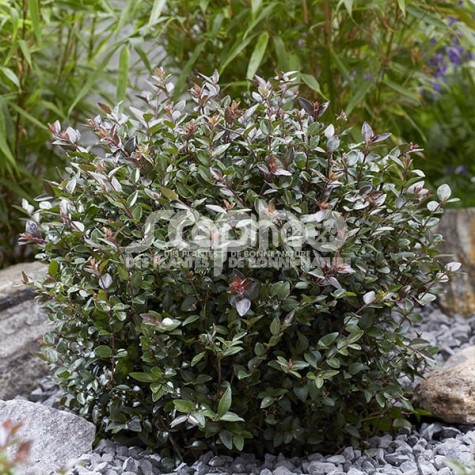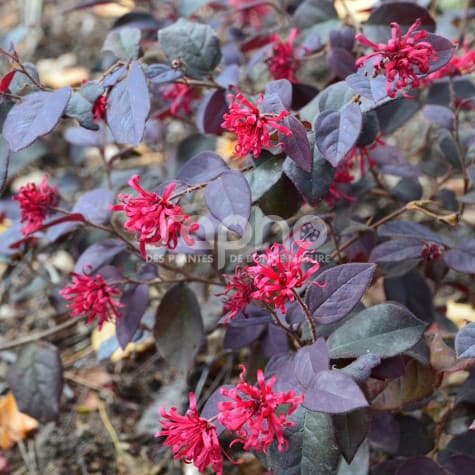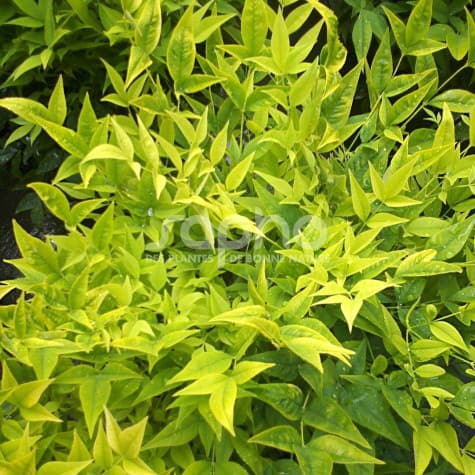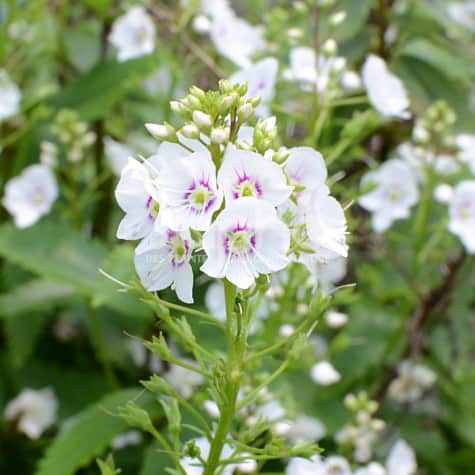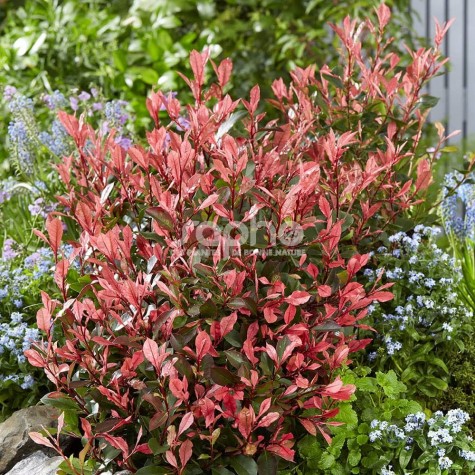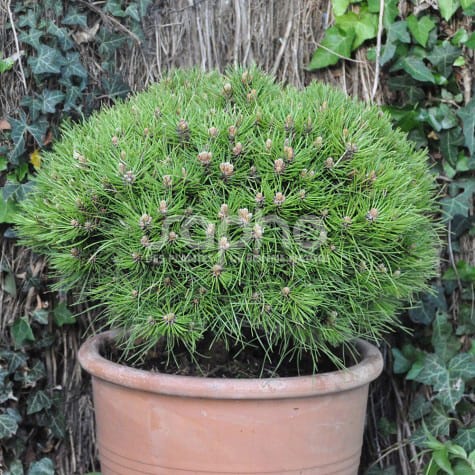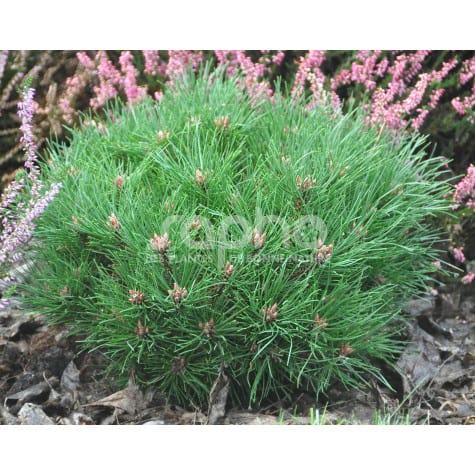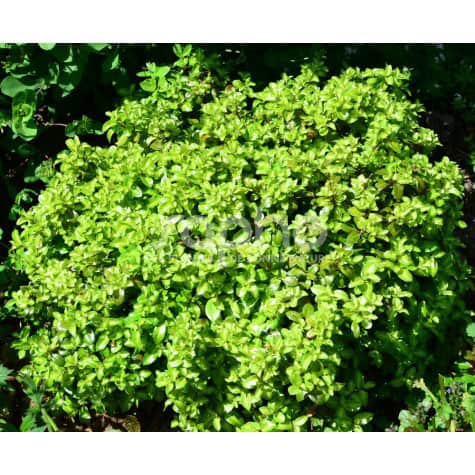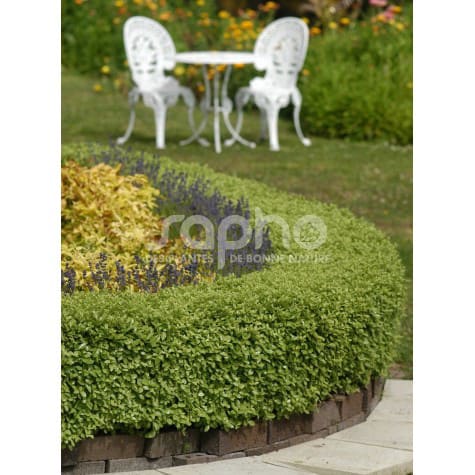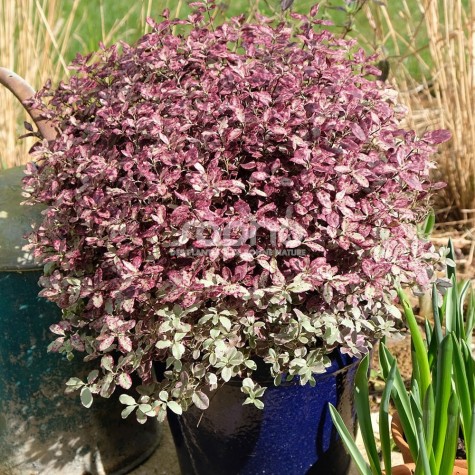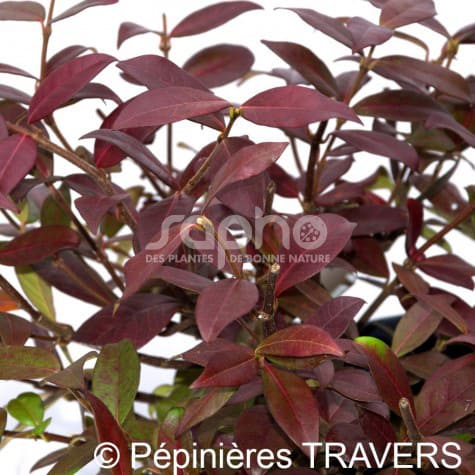A shrubby evergreen honeysuckle with magnificent purple shoots
GARDEN CLOUDS® Purple Storm is a variety of shrubby honeysuckle more resistant to cold than the typical species (-18° C).
Its dense habit, fine, glossy, light-green leaves with dark purple shoots and ease of cultivation make it easy to prune and use in topiary.
It adapts to all soils (unlike Ilex crenata) and is faster-growing than boxwood, with no health problems.
Use in the ground, borders, low hedges or pots.
Filter By
Foliage
Position
Where to find Sapho plants ?
For young plants
You will find the names of Sapho-licensed nurserymen at the bottom of each variety sheet.
For available plants
Please ask your nursery suppliers.
Each licensed propagator is free to market his young plants to all his customers.
Categories
Menu
All our varieties
Remarkable bright red flowers and beautiful purple foliage all year long
This evergreen Loropetalum is noticeable for its foliage, which stays very deep purple all year long.Its habit is compact, upright and spread, the dimensions are moderate.EVER RED® is particularly spectacular during its flowering period, from the end of February to May, depending on the climate. The beautifully sized flowers are shaped as pompoms of fine straps, caracteristic for the Hamamelidaceae family Their full red colour is highlighted by the dark foliage.Loropetalum like half shade, they tolerate light sun. Once established they suffer draughts.EVER RED® can be planted alone or in numbers, in a distance of 1.00 - 1.20 m, and also in pots on a terrace or a balcony when regularly watered.
In springtime its chartreuse coloured leaves are very attractiveA Nandina with a brand-new colour! The new shoots are yellow-green, chartreuse or also lime green and very bright. In full sun the outer leaves keep their chartreuse colour, whereas the inner leaves turn light green.Its shape is very interesting, forming a bushy and branched little shrub of under 1 m, like a ball.It never flowers, or very seldom.Recommended to illuminate the darker parts of the garden in the spring, it also accepts to be grown in pots.Trophies: Gold medal at PLANTARIUM 2014 (Boskoop - NETHERLANDS)Honored with a Retailer's Choice Award™ at SNA 2014
A deep foliage, abundant and delicate white flowers all summer longOriginating in New Zealand, this evergreen selection is hardy down to -12° C.It's leathery, regularly toothed leaves are first tender green, changing afterwards to a pretty dark green. The young stems are purple-brown.'Avalanche' is very floriferous from June to September. It covers itself in a cloud of simple, small white flowers with a purple center, standing out well on the foliage.Its long summer flowering, a quick growth and bushy shape make this variety an ideal plant for small spaces and pots.
A tiny Photinia full of energy! Made for balconies or low hedges
This variety of photinia is particularly compact and dense-growing, with sturdy stems.
Its dark green foliage contrasts with the bright pink young shoots.
An easy-care plant, it bears pruning well and branches well.
Perfect for pots, balconies or low hedges.
A beautiful regular ball of 0,80 m high (fully grown).
Growth rate is 5 - 9 cm per year, slower than 'Pierrick Bregeon'.
Forms a compact dense mound.
Light green needles of up to 10 cm, can naturally and slightly turn yellow in winter. Spiraling needles at maturity. Viability of the needles: 3 to 4 years.
Small grey buds with a pointy tip
No resin production.
Like all the other varieties of the pine range, registered by H. BREGEON, its reduced growth allows this pine to be grown in pots, on terraces and on balconies, as well as in small modern gardens.
Bambino®, the smallest of the range.
The smallest variety (0.50 m fully grown) and of slowest growth rate.
The dark green needles stay on for 2 to 3 years.
Pointed buds.
Very slight resin production.
Like all the other varieties of the pine range, registered by H. BREGEON, its reduced growth allows this pine to be grown in pots, on terraces and on balconies, as well as in small modern gardens.
A golden ball for low hedges or in isolationThe variety 'Golden Ball' has very brilliant golden foliage. In its period of growth, its young golden-yellow leaves contrast with the older yellow-green leaves edged with a stronger green.Coming from the same breeding than Pittosporum tenuifolium 'Golf Ball', 'Golden Ball' has the same qualities: very dense, it naturally forms a ball of less than one meter. Fast-growing and branching from the base, it can be pruned. 'Golden Ball' is ideal for small spaces and low hedges as well as in pots and for topiary.As it is resistant to drought, wind and seaspray, it provides an alternative to box in temperate and Mediterranean areas. In May and June its small discreet violet-coloured flowers smell of honey.
Recommended for its low, naturally ball shaped growthThis cultivar originates from New Zealand.?Golf Ball? has a very round shape, not more than 1 m in dimension. It grows rapidly and stands out by its dense branches from the base upwards.Its evergreen foliage is light green.Discrete violet-brown flowers appear in Mai and June. The have a scent of honey but are of no decorative interest. 'Golf Ball' resists rather well to drought, and to temperatures of -5 to -10° C. It is excellent for the sea side because it accepts mist and wind.Recommended for small areas and low hedges, it is also suitable for pots and as topiary, like box.
Fantastic foliage in perpetual evolution
The Bannow Bay variety is a natural mutation of the Pittosporum Tom Thumb.
Its very dense foliage has evolving colors: olive green edged with white in spring, then splashed with pink and finishing in a beautiful shade of purple when the cold arrives.
Its natural, round clump growth requires little or no pruning.
This shrub adapts perfectly to mild climates, in the garden or in pots on a balcony or terrace.
Perfumed flowers in summer and a superb coral-red foliage in winter
In winter its stems and foliage acquire a pronounced, beautiful and decorative coral-red all through the height of the plant.In addition to its winter colours, Trachelospermum jasminoides Winter Ruby® has other advantages over typical jasmines. Its elegant foliage is livelier and brighter. It resists frost better (as low as -17°C), is more persistent and retains its leaves better which don't dry out in winter.Its generous white flowers bloom slightly earlier (between May and July in full sun, from June to September where it's partly shaded) and are all just as perfumed. It doesn't grow as tall (2 to 3 m) as typical jasmines (up to 5 m or more).For its compact form, its natural branching and abundant flowering, Winter Ruby® is an ideal variety for growing in pots with supports of 40 cm to 1.5 m.

